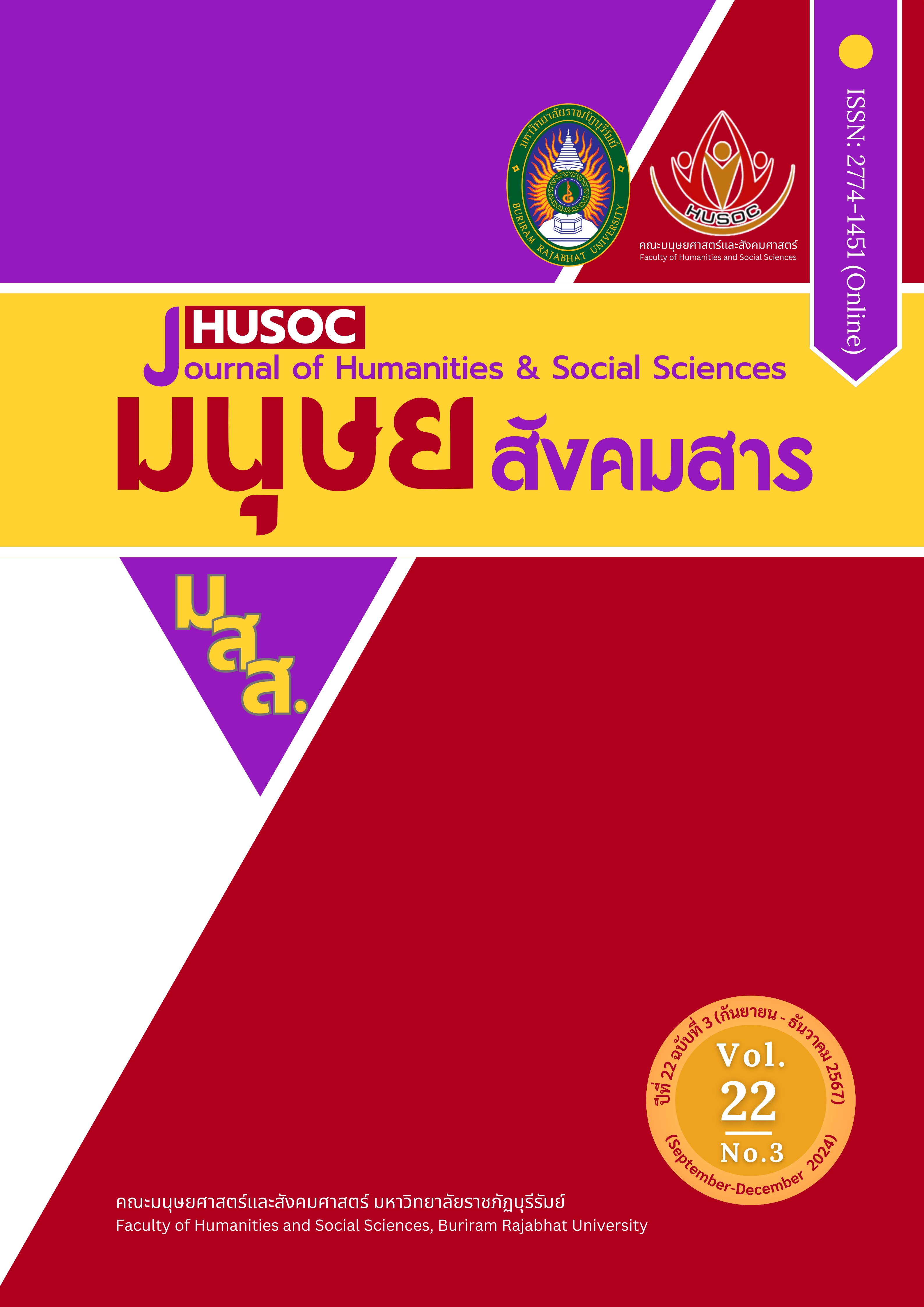การพัฒนาเรขศิลป์สิ่งแวดล้อมเพื่อการฟื้นฟูอัตลักษณ์เมืองเก่าบุรีรัมย์
Main Article Content
Abstract
This research used methods of data collection from documents, field surveys, data synthesis with experts, and the study of the needs of a sample group of residents in Buriram city across various age groups, totaling 40 participants. The research findings revealed that the sample group wanted Phanom Rung Stone Castle to represent the old city of Buriram. Additionally, they were open to new identities introduced by urban development policies, such as the transformation into a sports city, the conservation of Thai crane species, and trends from social media, such as the "meatball-on-a-stick" trend. Based on these findings, the researcher used the data as a guideline to design three sets of environmental graphic elements: public utility signs, lucky cartoon characters, and commercial promotion graphics. These works were displayed in an exhibition, where feedback was collected from the sample group and exhibition visitors. The conclusion found that all three sets of environmental graphic designs were universal, clearly communicated their meanings, and aligned with the social dynamics of the city, which blends traditional identity with new contexts. Therefore, it can be concluded that the developed environmental graphic elements have the potential to serve as models or standards for creating understanding between government agencies, designers, and entrepreneurs, which can effectively help revive the identity and unity of the old city of Buriram.
Article Details

This work is licensed under a Creative Commons Attribution-NonCommercial 4.0 International License.
เนื้อหาและข้อมูลในบทความที่ลงตีพิมพ์ในวารสารทดสอบระบบ ThaiJo2 ถือเป็นข้อคิดเห็นและความรับผิดชอบของผู้เขียนบทความโดยตรงซึ่งกองบรรณาธิการวารสาร ไม่จำเป็นต้องเห็นด้วย หรือร่วมรับผิดชอบใดๆ
บทความ ข้อมูล เนื้อหา รูปภาพ ฯลฯ ที่ได้รับการตีพิมพ์ในวารสารทดสอบระบบ ThaiJo2 ถือเป็นลิขสิทธิ์ของวารสารทดสอบระบบ ThaiJo2 หากบุคคลหรือหน่วยงานใดต้องการนำทั้งหมดหรือส่วนหนึ่งส่วนใดไปเผยแพร่ต่อหรือเพื่อกระทำการใดๆ จะต้องได้รับอนุญาตเป็นลายลักอักษรจากวารสารทดสอบระบบ ThaiJo2 ก่อนเท่านั้น
References
Arntson, A. E. (2007). Graphic design basics. Cengage Learning, Inc. Buriram Municipality. (n.d.). History of Buriram city.
Cairo, A. (2013). The functional art: An introduction to information graphics and visualization. New Riders.
Caivano, J. L. (2006). Research on color in architecture and environmental design: Brief history, current developments, and possible future. Color Research & Application, 31(4), 350-363.
Harland, R. (2016). Graphic design in Urban environments. Bloomsbury publishing.
Harachi, P., & Bejrananda, M. (2019). The perception of the insider and outside of place identity Buriram Province. Journal of Architectural/Planning Research and Studies, 16(2), 49-67. [in Thai]
Lynch, K. (1960). The image of the city. MA: MIT Press.
Nuansai, B., Suebwattana, T., Chanpanit, A., & Chansang, A. (2013). History of community extension in Buriram municipality during BE. 2468-2550. Journal of Research and Development Buriram Rajabhat University, 8(1), 42-49. [in Thai]
Papalia, D. E., Olds, S. W., & Feldman, R. D. (2008). Human development. Kencana.
Pittayamethi, P. (2017). Thaitone 2.0 Thai color names and English with CMYK color valuesand color code. https://oer.learn.in.th/search_detail/result/ [in Thai]
Provincial office of natural resources and environment Buriram. (2019). Master plan and master plan for conservation and development of the old city of Buriram. Faculty of architecture, urban design & creative arts Mahasarakham University. [in Thai]
The Fine Arts Department. (2005). Phanom Rung Castle. Winai Printing House. [in Thai]
Wijit, I. (2016). Communications of identities to promote the tourism of Buriram province. Thammasat University. [in Thai]
Woody Show. (2021). Lalisa Black Pink. https://news.ch7.com/tags/WoodyShow
Worakamwichai, S. (2012) Buriram, historical and cultural background. T.K. Printing. [in Thai]


